In the fiercely competitive compact SUV segment, two names stand out: the Nissan Qashqai and the VW T-Cross. Both models aspire to capture the hearts of drivers seeking a blend of style, efficiency, and technology. But how do they compare on critical technical aspects and innovations? Let’s delve into the details.
Nissan Qashqai vs VW T-Cross – Which car suits you better?
Both models have their strengths – but which one suits you more?
Compare performance, efficiency, price and space directly: Nissan Qashqai or VW T-Cross?
Design and Dimensions
The Nissan Qashqai presents a bold and modern design with a length of 4425 mm, a width of 1835 mm, and a height of 1625 mm. This SUV allows for a spacious interior, resulting in a trunk capacity of up to 504 liters, ideal for families or weekend getaways. On the other hand, the VW T-Cross is slightly more compact at 4127 mm in length, 1784 mm in width, and 1573 mm in height. Although it is smaller, it still offers a respectable trunk capacity of 455 liters, making both vehicles practical for everyday use.
Engine Options and Performance
Both the Qashqai and T-Cross provide a range of engine options to cater to various driving preferences. The Qashqai offers a selection of petrol engines, including a mild hybrid and a full hybrid, with power outputs ranging from 140 to 190 HP. It excels in acceleration, with some variants achieving 0-100 km/h in as little as 7.9 seconds. Fuel consumption ranges from 5.1 to 6.8 L/100km, ensuring that it remains efficient across the board.
In contrast, the T-Cross features a unique lineup of petrol engines with power ratings from 95 to 150 HP. Although the T-Cross is not quite as powerful as the Qashqai, it still offers competitive acceleration times, peaking at 8.4 seconds for the most capable engine. Its fuel efficiency is equally impressive, varying from 5.6 to 6.0 L/100km, making it an economical choice.
Transmission and Drive
The Nissan Qashqai comes with the choice of various transmissions, including manual, automatic, and advanced CVT options that cater to both performance and user control preferences. Additionally, the availability of all-wheel drive enhances its driving capabilities, particularly in diverse weather conditions.
On the other hand, the T-Cross utilizes front-wheel drive and offers both manual and dual-clutch automatic transmissions. The focus on front-wheel drive provides a more fuel-efficient performance, but those seeking all-terrain capability might find the Qashqai's drive options more appealing.
Interior and Technology
Inside, both models are designed with driver comfort and technological advancements in mind. The Qashqai features a modern cabin with high-quality materials and a user-friendly infotainment system. It boasts a suite of safety features, including a comprehensive driver-assistance package that leverages advanced sensing technologies.
The T-Cross also has a trendy interior outfitted with tech-savvy features. Its infotainment system is intuitive, and it supports smartphone integration, ensuring that drivers stay connected on the road. VW’s commitment to safety is evident in its array of driver-assistance features, prioritizing occupant protection and road safety.
Conclusion
The battle between the Nissan Qashqai and VW T-Cross is a testament to modern automotive engineering and design. The Qashqai shines with its diverse engine options, impressive acceleration, and spacious interior. Meanwhile, the T-Cross holds its own with competitive fuel efficiency, a compact design ideal for urban driving, and a focus on connected technology.
Your choice ultimately depends on individual preferences. If you prefer a powerful ride with multiple capabilities and spaciousness, the Qashqai may be your best bet. However, if you value economy and a more compact footprint for city driving, then the T-Cross is hard to beat. Whichever you choose, both models represent the forefront of compact SUV innovation.
Here’s where it gets real: The technical differences in detail
Costs and Efficiency:
When it comes to price and running costs, the biggest differences usually appear. This is often where you see which car fits your budget better in the long run.
VW T-Cross has a significantly advantage in terms of price – it starts at 21100 £, while the Nissan Qashqai costs 29600 £. That’s a price difference of around 8528 £.
Fuel consumption also shows a difference: Nissan Qashqai manages with 4.50 L and is therefore distinct more efficient than the VW T-Cross with 5.40 L. The difference is about 0.90 L per 100 km.
Engine and Performance:
Under the bonnet, it becomes clear which model is tuned for sportiness and which one takes the lead when you hit the accelerator.
When it comes to engine power, the Nissan Qashqai has a distinct edge – offering 205 HP compared to 150 HP. That’s roughly 55 HP more horsepower.
In acceleration from 0 to 100 km/h, the Nissan Qashqai is slightly quicker – completing the sprint in 7.60 s, while the VW T-Cross takes 8.40 s. That’s about 0.80 s faster.
In terms of top speed, the Nissan Qashqai performs barely noticeable better – reaching 206 km/h, while the VW T-Cross tops out at 200 km/h. The difference is around 6 km/h.
There’s also a difference in torque: Nissan Qashqai pulls clearly perceptible stronger with 330 Nm compared to 250 Nm. That’s about 80 Nm difference.
Space and Everyday Use:
Whether family car or daily driver – which one offers more room, flexibility and comfort?
Both vehicles offer seating for 5 people.
In curb weight, VW T-Cross is somewhat lighter – 1267 kg compared to 1420 kg. The difference is around 153 kg.
In terms of boot space, the Nissan Qashqai offers hardly perceptible more room – 504 L compared to 455 L. That’s a difference of about 49 L.
In maximum load capacity, the Nissan Qashqai performs a bit better – up to 1447 L, which is about 166 L more than the VW T-Cross.
When it comes to payload, Nissan Qashqai hardly perceptible takes the win – 520 kg compared to 480 kg. That’s a difference of about 40 kg.
Who comes out on top?
Overall, the Nissan Qashqai shows itself to be wins the duel decisively and secures the title of DriveDuel Champion.
It convinces with the more balanced overall package and proves to be the more versatile choice for everyday use.
 @ Nissan Motor Corporation
@ Nissan Motor Corporation
Nissan Qashqai
Nissan Qashqai
The Nissan Qashqai blends practical, family-friendly packaging with SUV styling that refuses to shout, making it a sensible and dependable choice for everyday life. It’s comfortable to live with, economical on the road, and neatly equipped enough to feel modern without ever feeling precious — perfect if you want crossover versatility without the drama.
details @ Nissan Motor Corporation
@ Nissan Motor Corporation
 @ Nissan Motor Corporation
@ Nissan Motor Corporation
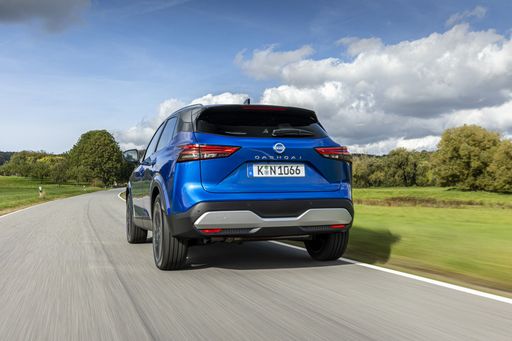 @ Nissan Motor Corporation
@ Nissan Motor Corporation
 @ Nissan Motor Corporation
@ Nissan Motor Corporation
 @ Nissan Motor Corporation
@ Nissan Motor Corporation
VW T-Cross
The VW T-Cross turns everyday practicality into a style statement, offering a roomy-feeling cabin, clever storage and playful design that suits town life and family duties alike. On the road it's composed and relaxed, rewarding buyers who want the raised seating and confident presence of an SUV without the weighty compromises.
details @ Volkswagen AG / VW Media
@ Volkswagen AG / VW Media
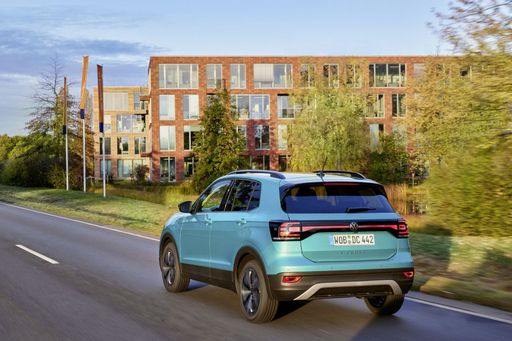 @ Volkswagen AG / VW Media
@ Volkswagen AG / VW Media
 @ Volkswagen AG / VW Media
@ Volkswagen AG / VW Media
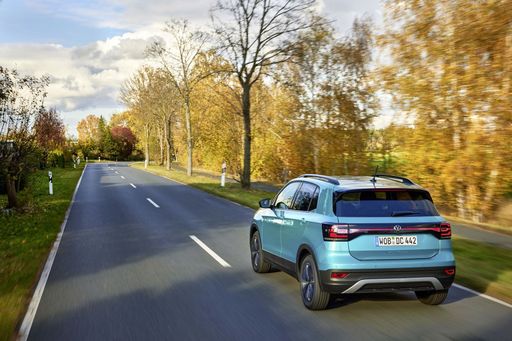 @ Volkswagen AG / VW Media
@ Volkswagen AG / VW Media
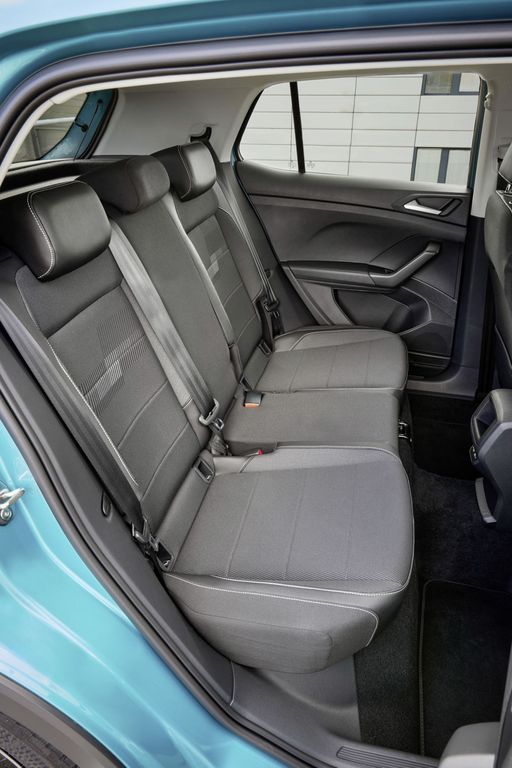 @ Volkswagen AG / VW Media
@ Volkswagen AG / VW Media
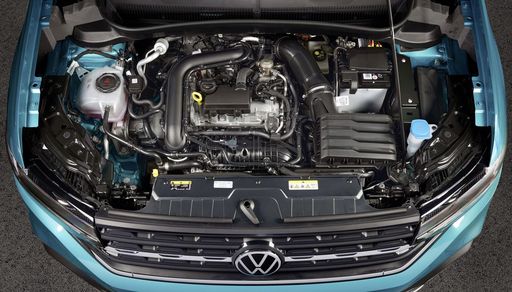 @ Volkswagen AG / VW Media
@ Volkswagen AG / VW Media
 @ Nissan Motor Corporation
@ Nissan Motor Corporation
|
 @ Volkswagen AG / VW Media
@ Volkswagen AG / VW Media
|
|
|
|
Costs and Consumption |
|
|---|---|
|
Price
29600 - 39900 £
|
Price
21100 - 31500 £
|
|
Consumption L/100km
4.5 - 6.8 L
|
Consumption L/100km
5.4 - 6 L
|
|
Consumption kWh/100km
-
|
Consumption kWh/100km
-
|
|
Electric Range
-
|
Electric Range
-
|
|
Battery Capacity
-
|
Battery Capacity
-
|
|
co2
102 - 154 g/km
|
co2
124 - 136 g/km
|
|
Fuel tank capacity
55 L
|
Fuel tank capacity
40 L
|
Dimensions and Body |
|
|---|---|
|
Body Type
SUV
|
Body Type
SUV
|
|
Seats
5
|
Seats
5
|
|
Doors
5
|
Doors
5
|
|
Curb weight
1420 - 1665 kg
|
Curb weight
1267 - 1338 kg
|
|
Trunk capacity
479 - 504 L
|
Trunk capacity
455 L
|
|
Length
4425 mm
|
Length
4127 mm
|
|
Width
1835 mm
|
Width
1784 mm
|
|
Height
1625 mm
|
Height
1573 mm
|
|
Max trunk capacity
1422 - 1447 L
|
Max trunk capacity
1281 L
|
|
Payload
466 - 520 kg
|
Payload
463 - 480 kg
|
Engine and Performance |
|
|---|---|
|
Engine Type
Petrol MHEV, Full Hybrid
|
Engine Type
Petrol
|
|
Transmission
Manuel, Automatic
|
Transmission
Manuel, Automatic
|
|
Transmission Detail
Manual Gearbox, CVT, Reduction Gearbox
|
Transmission Detail
Manual Gearbox, Dual-Clutch Automatic
|
|
Drive Type
Front-Wheel Drive, All-Wheel Drive
|
Drive Type
Front-Wheel Drive
|
|
Power HP
140 - 205 HP
|
Power HP
95 - 150 HP
|
|
Acceleration 0-100km/h
7.6 - 10.2 s
|
Acceleration 0-100km/h
8.4 - 11.3 s
|
|
Max Speed
170 - 206 km/h
|
Max Speed
180 - 200 km/h
|
|
Torque
240 - 330 Nm
|
Torque
175 - 250 Nm
|
|
Number of Cylinders
3 - 4
|
Number of Cylinders
3 - 4
|
|
Power kW
103 - 151 kW
|
Power kW
70 - 110 kW
|
|
Engine capacity
1332 - 1498 cm3
|
Engine capacity
999 - 1498 cm3
|
General |
|
|---|---|
|
Model Year
2025
|
Model Year
2024 - 2025
|
|
CO2 Efficiency Class
E, C
|
CO2 Efficiency Class
D, E
|
|
Brand
Nissan
|
Brand
VW
|
Is the Nissan Qashqai offered with different drivetrains?
Available configurations include Front-Wheel Drive or All-Wheel Drive.
The prices and data displayed are estimates based on German list prices and may vary by country. This information is not legally binding.
